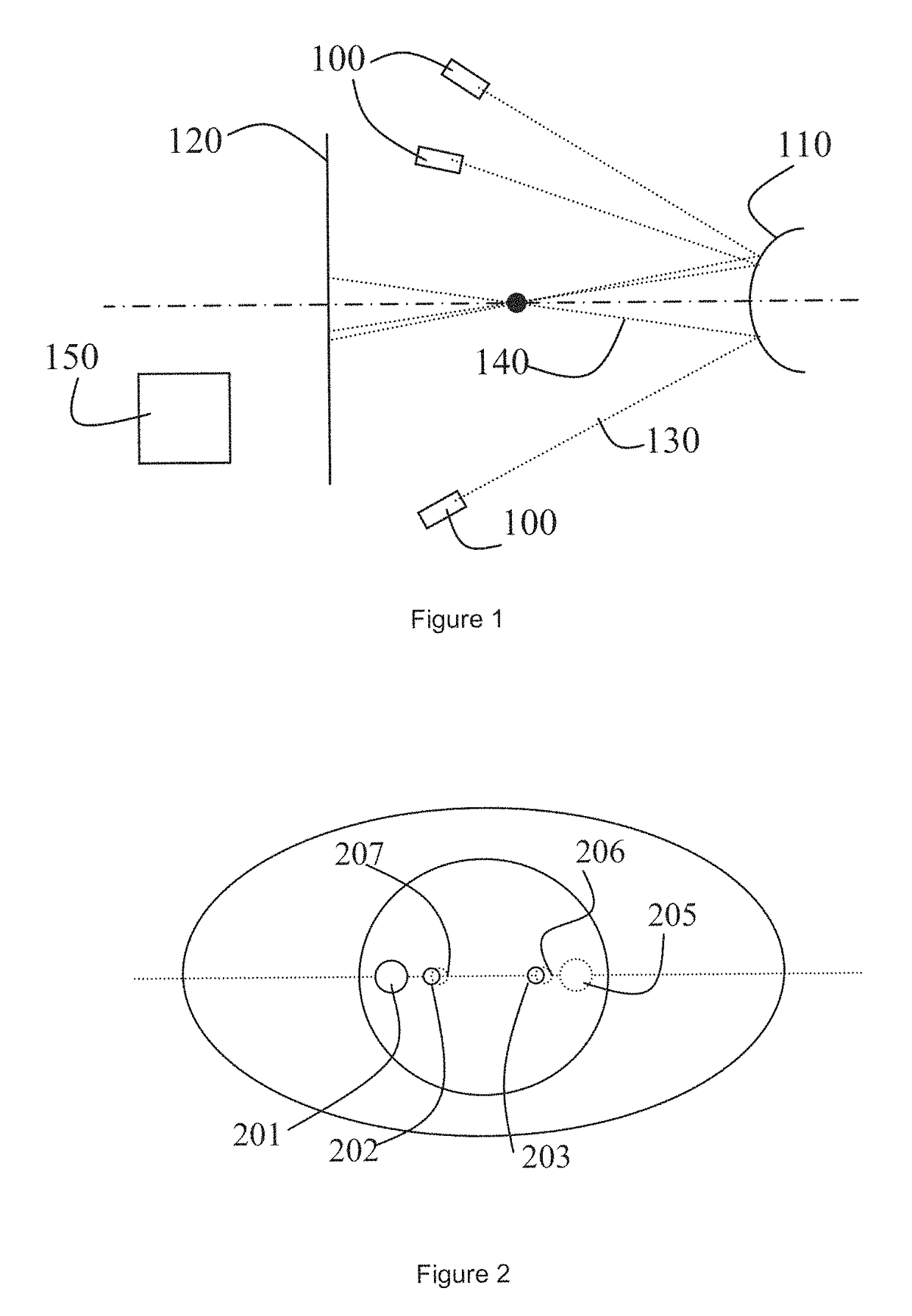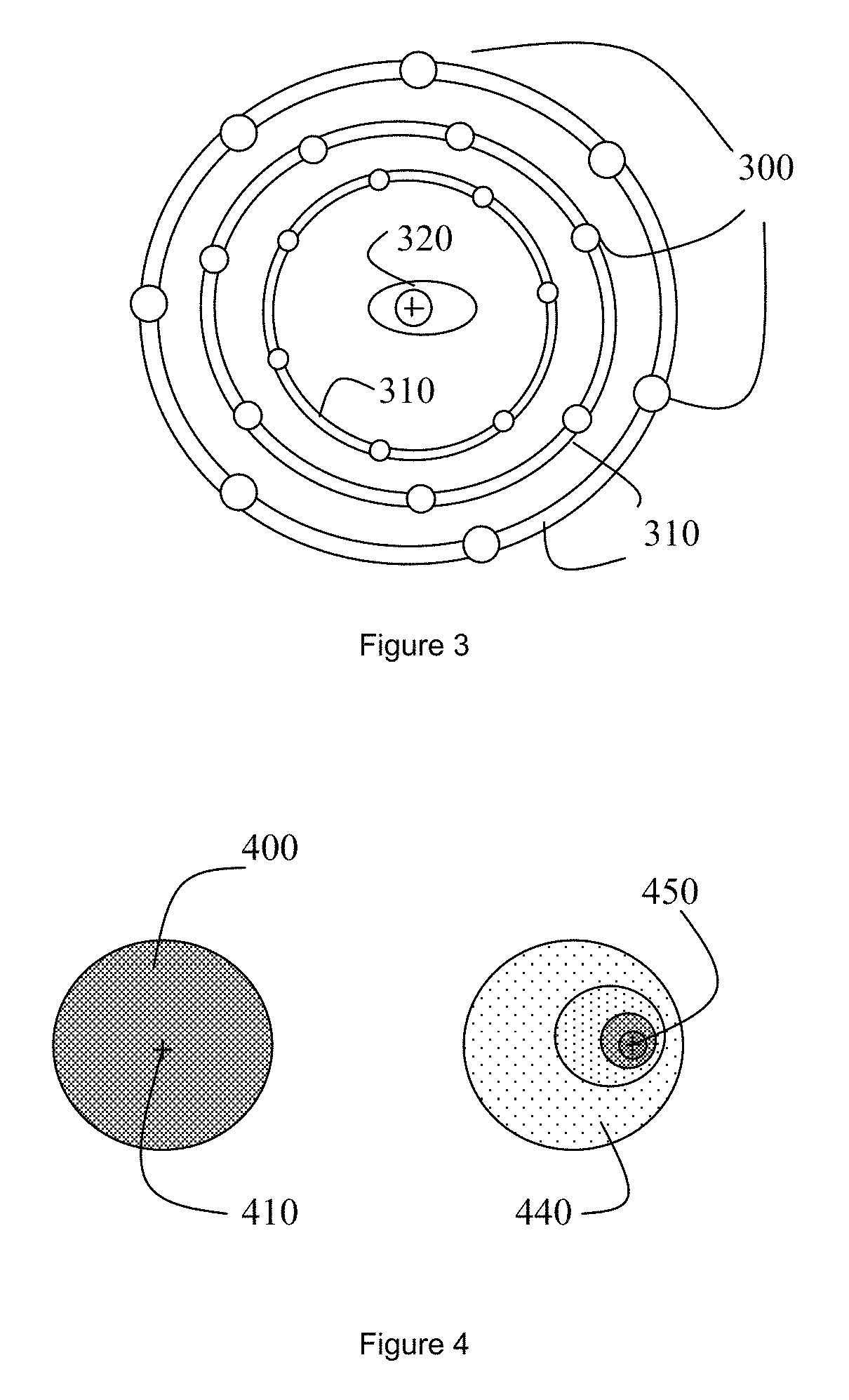Apparatus for corneal shape analysis and method for determining a corneal thickness
a corneal thickness and apparatus technology, applied in the field of apparatus for corneal shape analysis and apparatus for determining corneal thickness, can solve the problems of affecting the accuracy of the captured image,
- Summary
- Abstract
- Description
- Claims
- Application Information
AI Technical Summary
Benefits of technology
Problems solved by technology
Method used
Image
Examples
Embodiment Construction
[0085]FIG. 1 schematically depicts a first embodiment of an apparatus for corneal diagnosis according to the disclosure. The apparatus comprises a plurality of stimulator point light sources 100 arranged to, in use, illuminate a cornea of an eye. Contour 110 schematically represent the anterior surface of the cornea. The apparatus further comprises a camera system 120 arranged to capture an image of the reflections of the stimulator point light sources on the cornea. FIG. 1 further schematically depicts rays of light 130 originating from the plurality of stimulator point light sources and directed towards the cornea and the corresponding reflected rays 140 on the anterior surface 110 of the cornea. The apparatus as shown in FIG. 1 further comprises a computation unit 150 arranged to process an image obtained from the camera system in such manner that a corneal thickness is obtained.
[0086]In accordance with the present disclosure, a computational unit 150 may e.g. comprise a processo...
PUM
 Login to View More
Login to View More Abstract
Description
Claims
Application Information
 Login to View More
Login to View More - R&D
- Intellectual Property
- Life Sciences
- Materials
- Tech Scout
- Unparalleled Data Quality
- Higher Quality Content
- 60% Fewer Hallucinations
Browse by: Latest US Patents, China's latest patents, Technical Efficacy Thesaurus, Application Domain, Technology Topic, Popular Technical Reports.
© 2025 PatSnap. All rights reserved.Legal|Privacy policy|Modern Slavery Act Transparency Statement|Sitemap|About US| Contact US: help@patsnap.com



